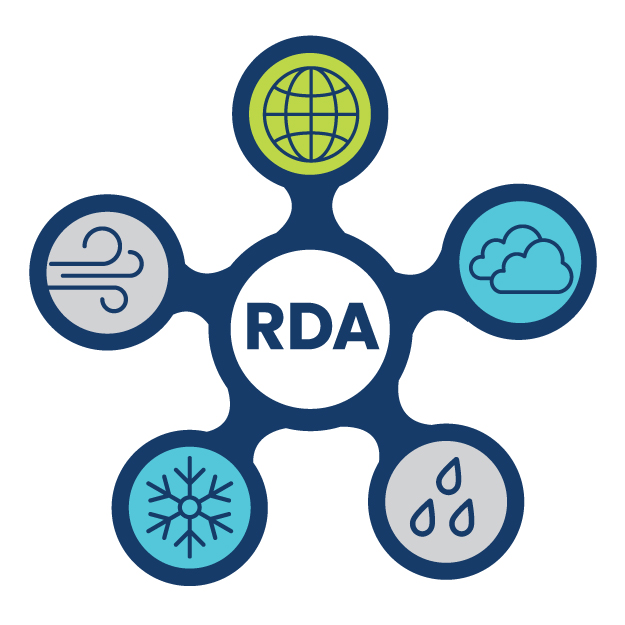
QSCAT/NCEP Blended Ocean Winds from Colorado Research Associates (version 5.0)
d744004
| DOI: 10.5065/XQYC-1602
Ocean surface wind data are derived from spatial blending of high-resolution satellite data (SeaWinds instrument on the QuikSCAT satellite - QSCAT) and global weather center re-analyses (NCEP), resulting in high temporal and spatial resolution datasets (6-hourly, and 0.5 by 0.5 degree) of u- and v- wind vector components and windstress curl. The global coverage datasets begin in July 1999 and ends in July 2009.
Surface wind component and wind stress curl fields are available in three forms: 1) a product that is the blended wind field output, 2) fields consisting of the NCEP re-analyses spline interpolated to the 0.5 by 0.5 degree grid (i.e. no QSCAT data blended), and 3) a product that is output from an intermediate step in the blending process that consists of the superposition of QSCAT observations on NCEP before blending. This product is useful to identify the satellite data swaths in each composite of 12-hours of QSCAT observations.
CAUTION: This blended wind product was developed for general circulation scale analyses - see these cautionary notes. The blending methodology is summarized in this document.
NOTE: The QSCAT satellite has permanent failed so this data time series has ended.
| Surface Winds | Wind Stress |
| 10 m |
Latitude Range: Southernmost=88S Northernmost=88N Detailed coverage information Detailed coverage information 0.5° x 0.5° from 0.5E to 360.0E and 88.0S to 88.0N (720 x 353 Longitude/Latitude)
 This work is licensed under a Creative Commons Attribution 4.0 International License.
This work is licensed under a Creative Commons Attribution 4.0 International License.